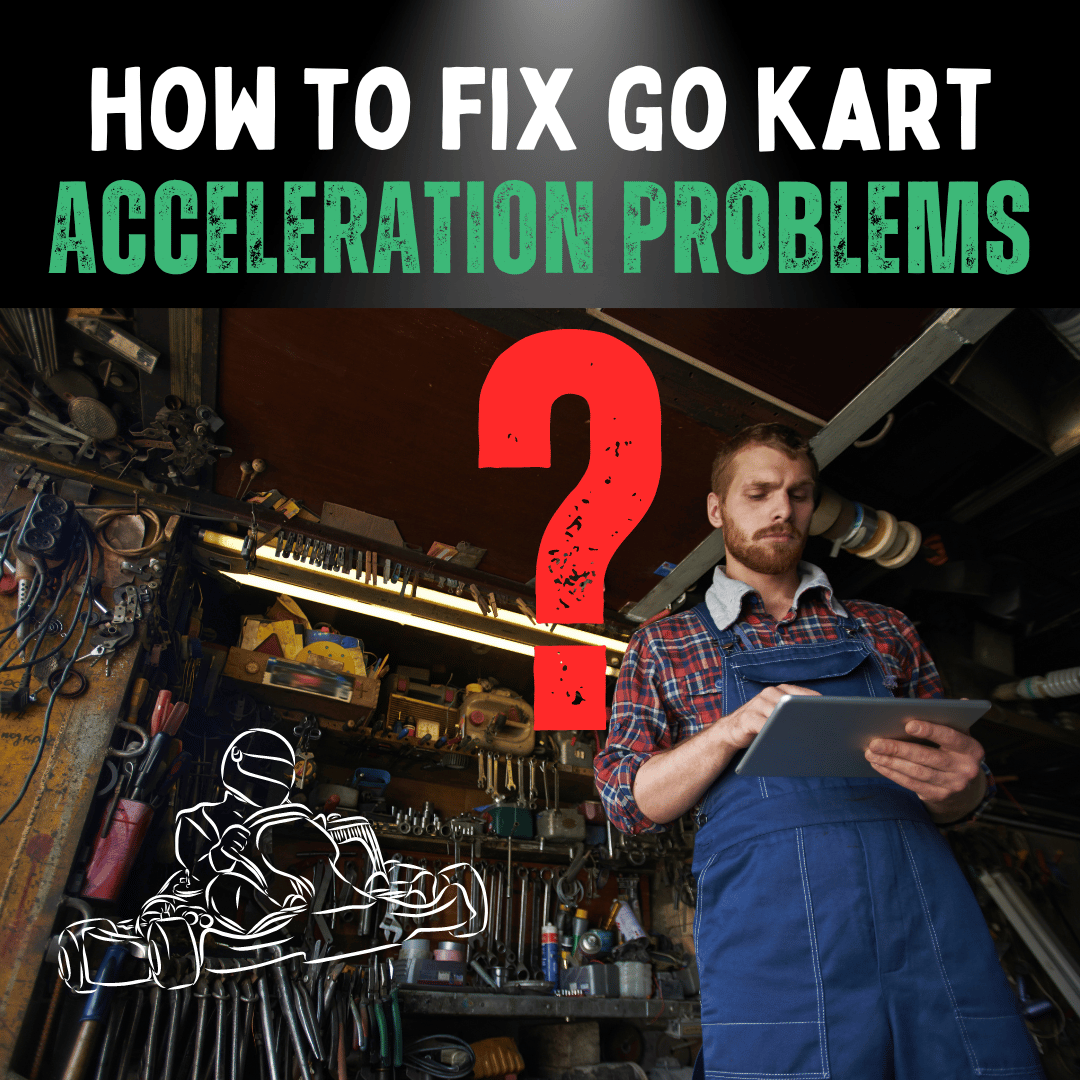
Published: 14 August 2023
Updated: 24 March 2025
When your go-kart doesn’t accelerate properly, it can turn a thrilling day at the track into a frustrating one.
This guide will help you troubleshoot and fix acceleration issues, whether you’re a beginner or a seasoned karting enthusiast.
Curious about go-kart speeds? Check out our articles on how fast most go-karts go and how fast a drift kart goes.
Understanding Acceleration Problems
Symptoms
Acceleration issues can show up as jerking movements, sluggish response, or a failure to increase speed.
These problems make your go-kart feel unresponsive, reducing the joy of driving.
Key Components to Check
| Component | Problem Indicators | Action |
|---|---|---|
| Carburetor | Clogs, damage | Inspect for clogs or damage; clean or replace. |
| Fuel System | Bad gas, clogged fuel lines | Inspect and clean fuel lines; replace old gas. |
| Spark Plug | Poor ignition, worn plug | Inspect and replace if necessary. |
| Air Filter | Restricted airflow, dirty filter | Clean or replace as needed. |
Step-by-Step Guide to Fix Acceleration
1. Check the Carburetor
The carburetor mixes air and fuel for the engine; a clog can cause acceleration issues.
Inspect for debris or damage, clean with carburetor cleaner, or replace if needed.
2. Inspect the Fuel System
Clogged fuel lines or bad gas can hinder fuel delivery to the engine.
Check and clean the lines, and replace old or contaminated gas.
3. Examine the Spark Plug
A worn spark plug can lead to poor ignition, affecting acceleration.
Inspect for wear and replace if necessary to restore performance.
4. Clean the Air Filter
A dirty air filter restricts airflow, causing acceleration problems.
Clean or replace the filter to ensure proper air intake; also, check out why your go-kart might hop through corners.
5. Check the Drive System and Chain
Worn or damaged drive components, like the chain or clutch, can reduce power transfer.
Inspect for wear, lubricate the chain, and replace any faulty parts.
6. Inspect the Throttle Cables
Rusty or loose throttle cables can affect throttle response; see more tips in our guide on enhancing go-kart racing performance.
Check for damage, adjust tension, and refer to your manual for specific guidelines.
Maintenance Tips and Safety

Regular Maintenance
- Change oil every 20-30 hours and clean the air filter monthly.
- Use fresh fuel and inspect fuel lines for cracks monthly.
- Lubricate the chain after each use and check brakes regularly.
For electric go-karts, focus on battery care—learn more in our pros and cons of electric go-karts for kids.
Safety Precautions
Always prioritize safety when working on your go-kart, especially with kids involved.
Check out our safety tips for kids riding go-karts for more guidance.
Conclusion
Fixing go-kart acceleration issues is straightforward with the right steps, from checking the carburetor to inspecting throttle cables.
Regular maintenance can prevent these problems, ensuring a smooth, enjoyable ride—also, see why your go-kart clutch might smoke.
FAQ’s
What are common signs of go-kart acceleration problems?
Jerking movements, sluggish response, or failure to increase speed are typical signs.
Why is my go-kart bogging down when accelerating?
It could be due to an incorrect fuel-to-air ratio, a misaligned clutch, or exhaust issues.
How can I improve go-kart acceleration without engine changes?
Re-gear by using a smaller sprocket to increase the engine’s force on the axle.
Why isn’t my go-kart moving when I press the gas?
The clutch may not be engaging, or the torque converter could be faulty; inspect these components.
How often should I maintain my go-kart to prevent acceleration issues?
Perform maintenance after each use, weekly checks, and a full inspection every 20-30 hours.
Ready to Race? 🚀
Loved our 2025 guide on fixing go-kart acceleration problems?
Explore more at RiiRoo.com or chat live with us!





Share:
How Does A Go-kart Transmission Work?
Is Go Karting Harder Than Driving?